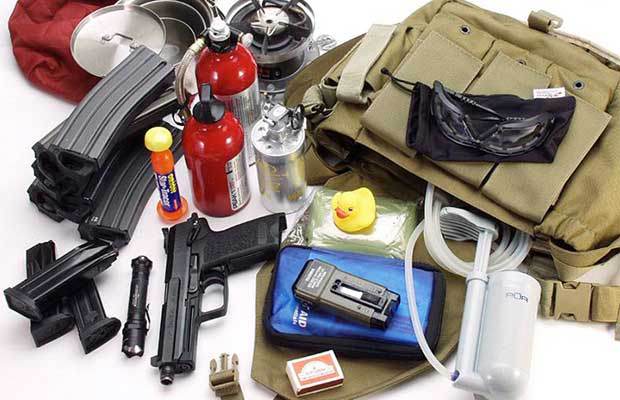Imagine a post-apocalyptic scenario in which you have access to all of the resources you could possibly need, but there are hundreds of thousands of other civilians battling for the same supplies; when the scenario is life or death, the potential havoc wreaked by the people could be as dangerous as the disaster itself and you could be killed for trying to reach the necessary resources to survive. This is just another reason why you need to be prepared now. The supplies will vary, but here is a basic guide to building a city-side emergency kit.
The basics:
 If your plan is to stay in your house and use it a base, you need basic items to ensure that you can hold your ground in relative comfort for x amount of time. The FEMA.gov emergency supply list suggests one gallon of water per person per day, on average about a two-week supply for a home stay; non-perishable, easy-to-prepare food is required and don’t forget the manual can opener. Additionally, diapers and formula for infants, extra water and food for any pets, and important documents or records.
If your plan is to stay in your house and use it a base, you need basic items to ensure that you can hold your ground in relative comfort for x amount of time. The FEMA.gov emergency supply list suggests one gallon of water per person per day, on average about a two-week supply for a home stay; non-perishable, easy-to-prepare food is required and don’t forget the manual can opener. Additionally, diapers and formula for infants, extra water and food for any pets, and important documents or records.
The American Red Cross urges anyone organizing an emergency plan to include prescription medications in excess if possible. Feminine supplies and personal hygiene items need to be included as well.
Gear for the group:
Suggestions from the American Red Cross: a whistle for commanding attention in chaotic emergency or threatening situations; N95 or surgical masks could be lifesavers in the event of airborne toxins; two-way radios, and spare batteries; flashlights and maps of the area will help you plan scavenging expeditions and quick getaways. You’ll also need tools and materials for securing your house, including work gloves, plastic sheeting, scissors, duct tape, extra sheets, blankets and towels.
A good bug out bag is another option for urban survival. If you have to leave in a hurry you will appreciate a rugged pack to carry your supplies.
Regular items already around the house should be in working condition and of ample supply. Household bleach is a must in your home survival arsenal, along with a medicine dropper—a combination of nine parts water and one part bleach will yield a DIY water disinfectant. Stay away from the color safe or scented bleaches, though, as they have a less agreeable chemical composition. Make sure you have matches secured in a waterproof container and a fire extinguisher.
Personal necessities:
One of the often overlooked aspects of every survival kit is being able to see clearly. Those with 20/20 vision are at an extreme advantage here, but half of all Americans have poor eyesight, so it’s important to take proper care of your eyes especially in a disaster scenario, when you need to be at your best. If you depend on glasses or contact lenses to see, stock up on extras and backups as much as possible; however, glasses and contacts are pricey, so buy in bulk from a discount resource like Vision Direct.
Possibly one of the most useful items in the kit will be your survival knife. The recommended blade size for a multipurpose knife is between six and 12 inches, and the recommended thickness of the blade is 3/16 of an inch to 4/16. Your survival knife should be handy and able to serve many purposes, but you do not want the blade to have a lot of flex to it.
Sure, it is impossible to prepare for every single disaster situation possible, and being stuck in a cityscape may not be you’re ideal survival scenario, but there are a few advantages to it. You can keep more supplies! And the right supplies can make all the difference.
While you’re prepping, read and learn as much as you can before you’re faced with the circumstance. To err on the side of caution, include concise directions for emergency reference materials that cover topics like how to administer first aid could mean the difference between life and death.





